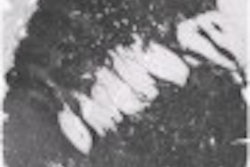The Society of Nuclear Medicine (SNM) has issued suggested travel security procedures for post-treatment nuclear medicine patients in response to reports that patients are triggering radiation monitors in public transportation facilities.
The SNM of Reston, VA, suggests that physicians provide patients who will be traveling on public transportation (such as airplanes, trains, and rapid transit), or visiting secure facilities, with a letter that contains the following information:
- Patient name
- Name of nuclear medicine procedure
- Date of nuclear medicine procedure
- Radionuclide used
- Half-life
- Administered activity
- 24-hour contact information
The letter should provide specific details about who should be contacted. Outside of normal working hours, the contact person should have access to an appropriate source of information such as a HIS or RIS, so that the information in the letter can be independently confirmed, according to the SNM.
In an effort to help educate security personnel, the SNM is requesting that physicians whose patients have complaints after being stopped by security personnel send the following information to the society’s director and general counsel for public affairs, William Uffelman ([email protected]). The e-mail should include the date of the encounter, location, nature of the complaint, and the name of the security agency or police department.
By AuntMinnie.com staff writersFebruary 17, 2003
Related Reading
New SNM regulatory guide for nuclear medicine, October 30, 2002
PET, SPECT given equal weight at SNM 2002, September 6, 2002
PET, SPECT studies chosen as SNM images of the year, June 18, 2002
SNM names executive director, March 7, 2002
ACNP and SNM hope to reduce impact of new regulations, September 19, 2001
Copyright © 2003 AuntMinnie.com




















